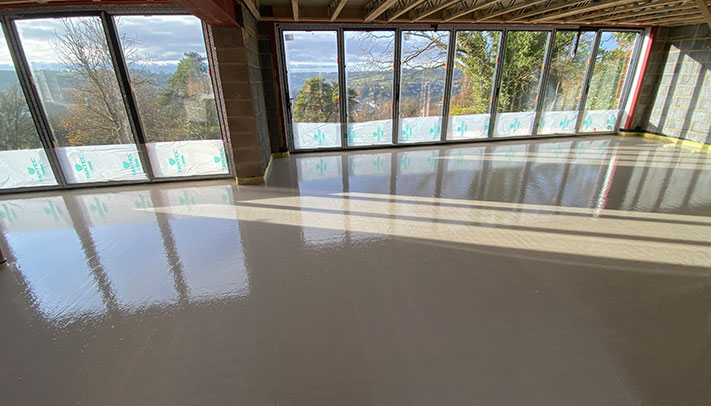When you stop to think about it, one of the parts of a building that is most likely to suffer from wear and tear is the floor or floors. We place heavy furniture and appliances on floors, and we walk on them constantly. Certainly, the outside of a roof and walls suffer from the weather, but even they do not get as much of a pounding as the floors.
Since we walk and place many objects on our floors, we need them to be as flat and level as possible, (with the exception of a wet room where the floor is sloping). For those who are unaware, it is not a good idea to place the surface flooring directly on to a concrete substrate for the simple reason that it is not going to be flat. If you were to tile directly on to concrete, for example, those tiles would be likely to suffer from cracking and breaking as soon as you walk on them. In any event, we want the flooring to be comfortable when walking on it.
Screed
The answer, for many years, has been to add what is known as a screed, which is a thin layer of material that is laid on top of the concrete in order to produce a level surface.
There are two basic types of screed, one of which is a traditional sand and cement mix, the other being what is known as a liquid screed which uses calcium sulphate in place of the cement. When mixed with water, the calcium sulphate turns into gypsum. This is why these screeds are known, among other names, as gypsum screeds. They are also called anhydrite screeds since the name derives from the word anhydrous (which means dry) calcium sulphate.
If you use our floor preparation service in Derbyshire, we deliver the liquid screed direct to your site ready mixed. This saves a considerable amount of time when compared with mixing sand and cement using a cement mixer on site.
All we need to do is to connect a hose and a pump to the delivery truck and simply pump the screed on to the concrete substrate. Simple – and very quick. Once the screed has been poured it is then just a matter of running over it with a dappling bar in order to remove any air bubbles. After that, it can be left to dry – which only takes a maximum of 48 hours before it can be walked on.
There are many other benefits of using our floor preparation service in Derbyshire that we will discuss in another article.








